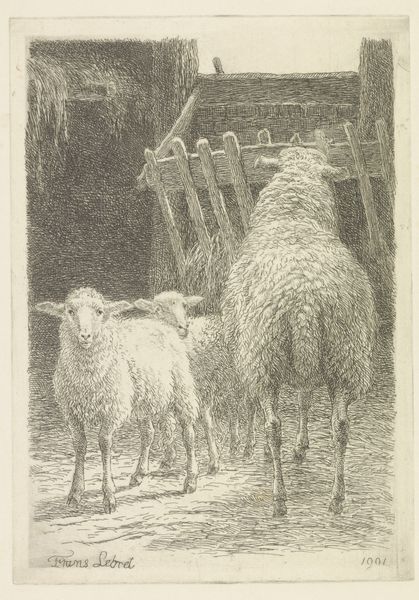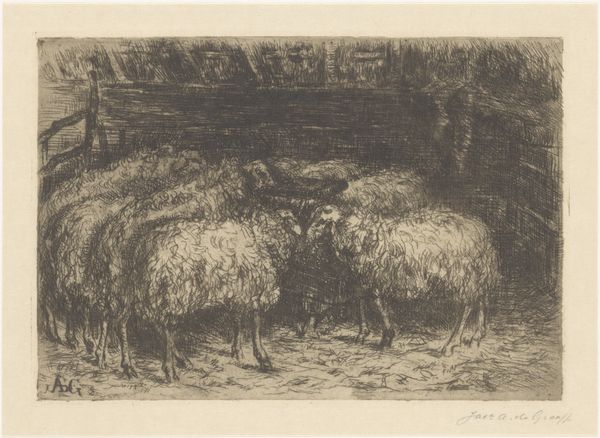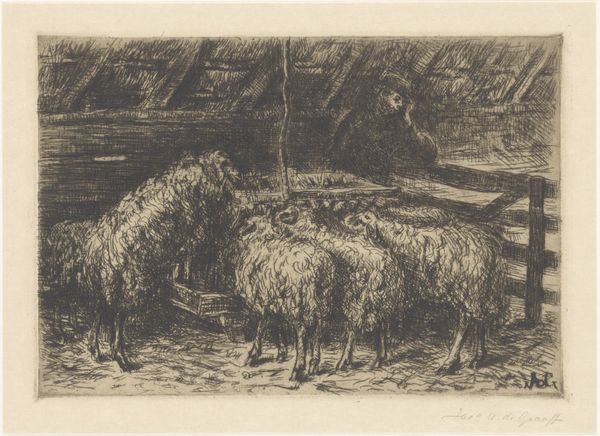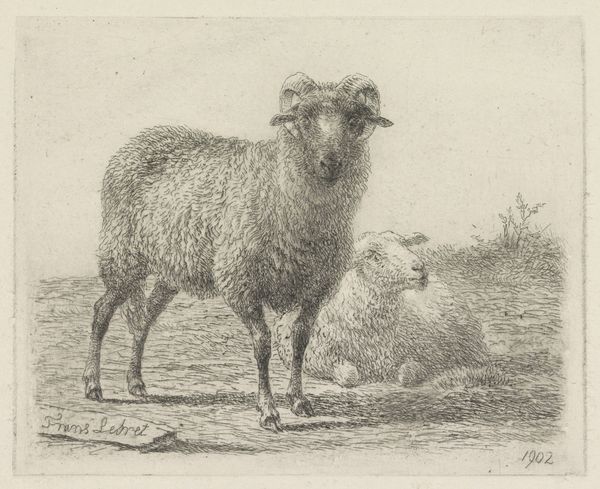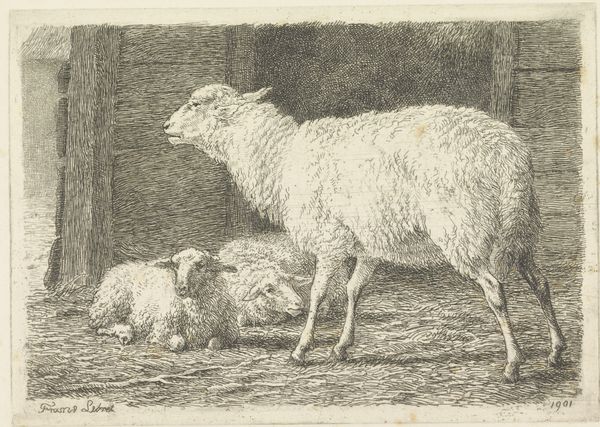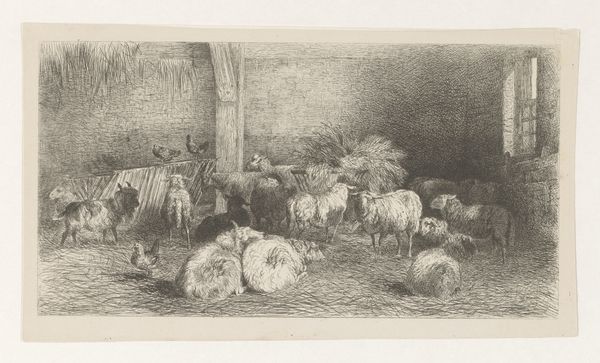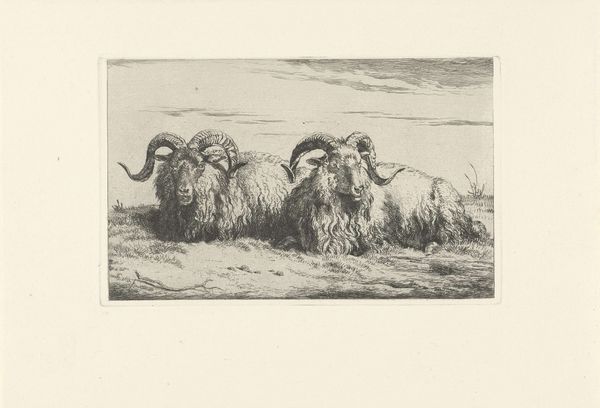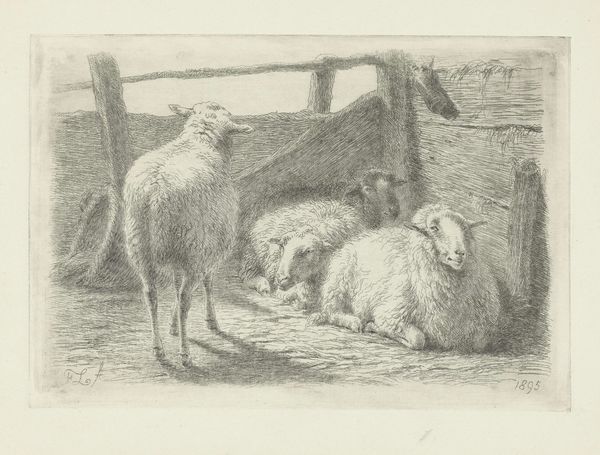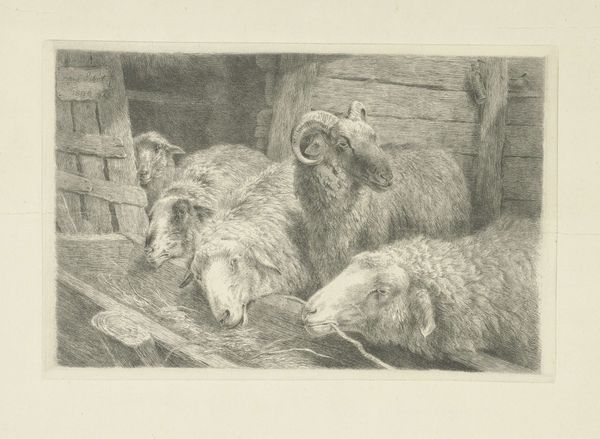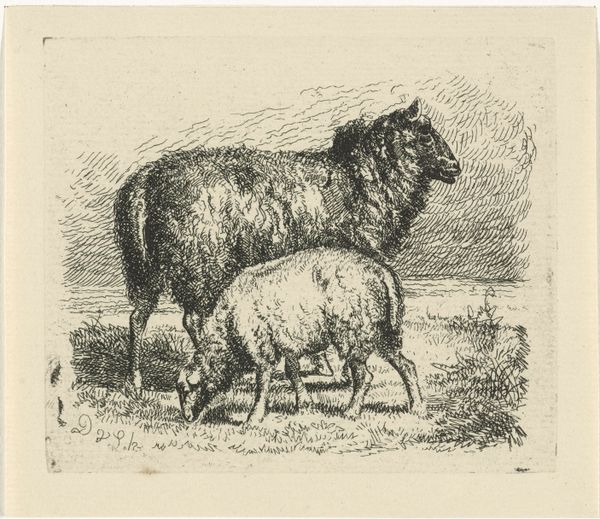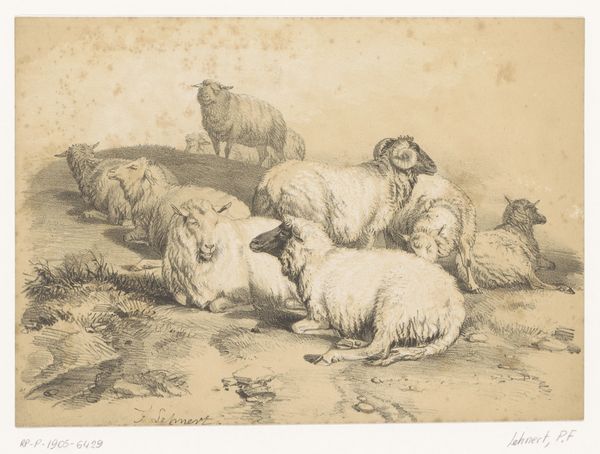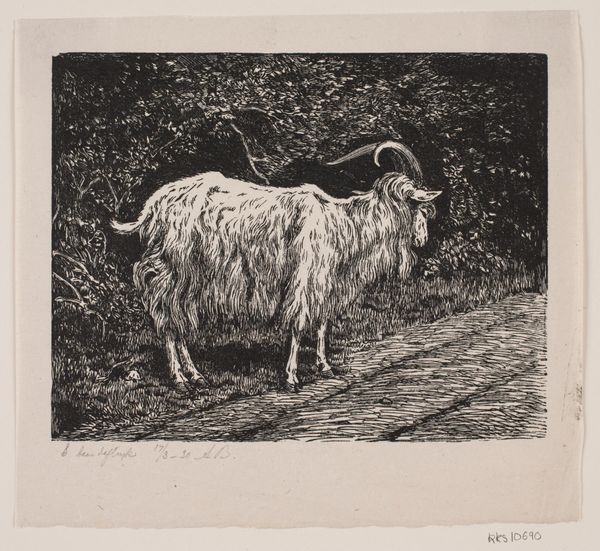
print, etching, engraving
#
animal
# print
#
etching
#
landscape
#
genre-painting
#
engraving
#
realism
Dimensions: height 158 mm, width 237 mm
Copyright: Rijks Museum: Open Domain
Curator: Here at the Rijksmuseum, we have Jacoba de Graaff's print "Schapen in een stal," which roughly translates to "Sheep in a Stable," believed to have been created between 1867 and 1911. De Graaff was known for her work in genre-painting and landscapes. The media listed are varied; etching, engraving and print. What are your first thoughts on seeing it? Editor: Immediately, there's this enveloping sense of quiet. It’s like stepping into a hush. The sheep, huddled together, feel incredibly vulnerable, as if sharing secrets in a space away from the noise. Is that gloom, or intimacy that the artist has captured so subtly in the limited light? Curator: That's interesting. Considering its place within the genre painting tradition, and also realist aesthetics, one could suggest the work hints at broader anxieties about industrialization and urbanization encroaching on traditional agrarian life, anxieties acutely felt and negotiated by women in particular, whose lives were intimately tied to that very transformation in that time. Editor: You know, now that you mention it, there's also a slightly melancholic air. I almost want to touch the wool. As a medium, it being a print on paper can feel, visually, as real as wool through the ink, and etched texture. This sense that their quiet space is also one of entrapment; these creatures, even as part of their existence, are commodities, so to speak, under this roof of the stable. I sense that she gives each its own personality and place in its social strata. Curator: It's a space where the animals exist, undeniably, within the control and perspective of humans. And what’s potent about De Graff’s image here, if you consider gender dynamics, is her focus on representing a subject—rural labor—from a vantage point so often not allowed at the time: a woman artist looking at animal husbandry, with perhaps the understanding that she too has that relationship to patriarchy at the time. Editor: Looking at it again now, after what we’ve talked about, changes its tune for me. I find myself looking closely at that small lamb on the left; nestled. It's so quietly subversive. Thank you. Curator: Absolutely. There are multiple angles to approach with Jacoba's art.
Comments
No comments
Be the first to comment and join the conversation on the ultimate creative platform.

